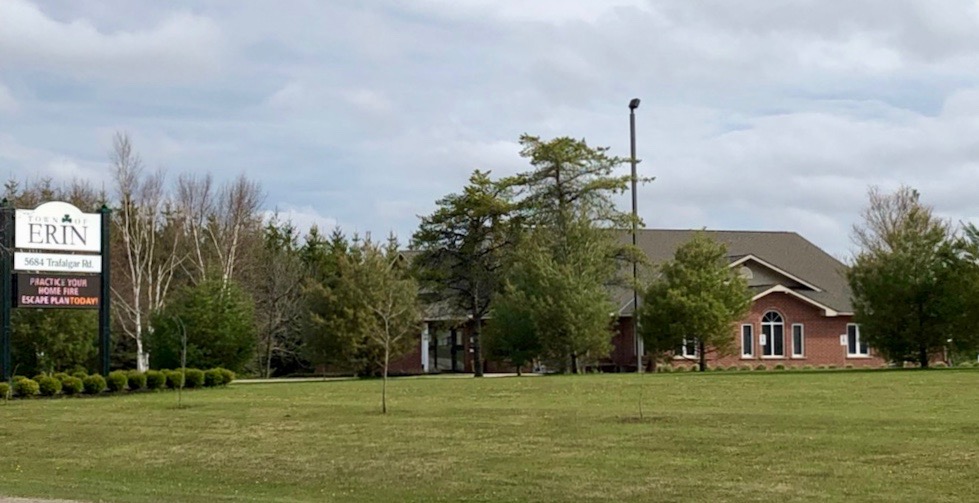ERIN – Residents in Erin can expect clear, concise and easily accessible information about wastewater treatment facility costs after council unanimously approved two of three motions put forward by councillor Michael Robins on Oct. 27.
The first motion asks staff to prepare a report on:
- calculating the estimated cost for homeowners to connect to the new wastewater collection system when it is finally constructed;
- the town’s plans to acquire provincial grants to defray those costs;
- payment options for homeowners; and
- funding options for the town to cover up-front costs, as payments for infrastructure may be made over time.
“A lot of this is in the public domain, but it’s in a lot of different places,” said Robins, explaining the rationale behind his request.
“The intent is to put the information together in an easy to understand fashion.”
Councillor Jamie Cheyne said, “It’s a good motion and these are important questions.
“But is this not going to come out in due time going forward? Would this be a duplication of effort?”
CAO Nathan Hyde replied, “Councillor Cheyne is correct – a lot of that is underway and staff can bring it forward.”
Hyde added some of the information requested is “premature,” since some council decisions are still pending.
He said he didn’t think the public would necessarily want a report and there might be a better way to inform the public on these matters.
“We can take this back and look at it,” Hyde said.
Robins’ second motion pertained to the costs of the sewage plant to the Town of Erin.
The motion asks staff to prepare a report that lays out:
- how much money has been spent to date on wastewater activities and how it has been funded;
- the criteria used to classify costs specific to wastewater and how those costs are segregated from general expenses; and
- how the indirect costs related to the infrastructure build out will be funded (including costs like restoring roads in neighbourhoods once the infrastructure is complete).
Robins is seeking clarification on whether indirect costs are included in the cost to install the main trunk lines, or if that work will come out of general road funds and are thereby paid by the community as a whole.
“People have been asking about this,” Robins said. “Rural residents are asking if they will be paying for this.”
Robins noted there are some growth-related costs not directly related to the sewage plant and he was seeking details on those indirect costs as well.
“Some of this is so expensive to drill down like that,” said councillor Rob Smith, referring to the expense involved in preparing such a report.
“If we borrow $20 million to fund (loans for residents when it’s time to hook up to the system), there will be interest with that,” Robins replied.
“I want to ensure that goes to wastewater rather than the general taxation base.”
Hyde said staff could calculate how much has been spent do date, and the director of finance could provide and encapsulate the criteria used to classify costs.
He said staff could engage Watson and Associates Economists Ltd. to do the calculations, as the firm prepared financial studies on the plant in the past and already has the numbers.
“It’s not overly burdensome,” Hyde said.
Robins withdrew his third motion to do with gravel roads.
This motion requested a report on the cost/benefit of applying surface material versus repaving, and the methodology used to decide which treatment a road will receive.
He hoped to receive the report before budget deliberations to assist with decision-making.
“I would like to see that analysis before budget,” he said.
Hyde explained the town is currently undertaking a roads needs study that is expected to be completed by April.
“I would suggest this is redundant,” he said.
Nick Colucci, director of infrastructure services, said a budget and explanation for road work proposed in the 2021 draft budget will be included in the budget package and the roads needs study, once approved by council, will help determine priorities.
“If there’s a supplemental report for budget, then I’m satisfied,” Robins said, withdrawing his motion.
Cheyne also put forward a motion, which passed unanimously, directing staff to report on the feasibility of installing hamlet signs at the four entries to 1st Line and Sideroad 27, historically known as Mimosa.
Mimosa was a flourishing hamlet from 1860 to 1880 but businesses moved to Orton when the Credit Valley Railway was built in 1879.
“We have other small areas that have signs,” Cheyne said.
“It would be nice to recognize Mimosa as a hamlet.”



